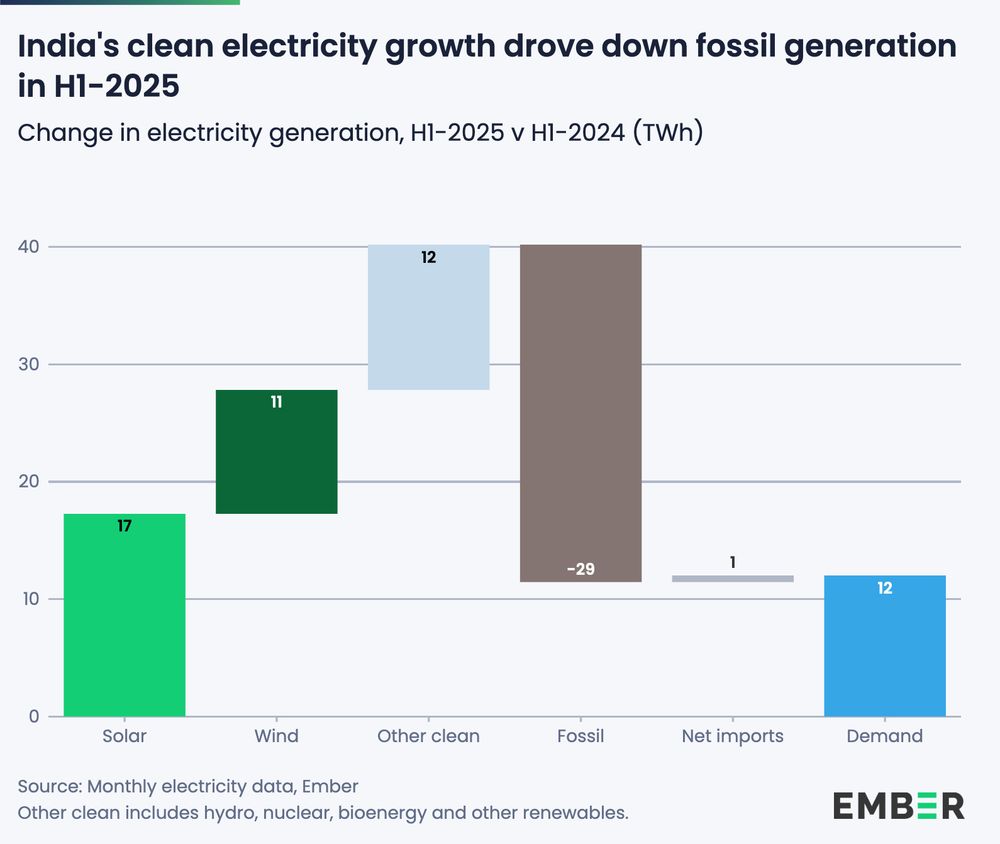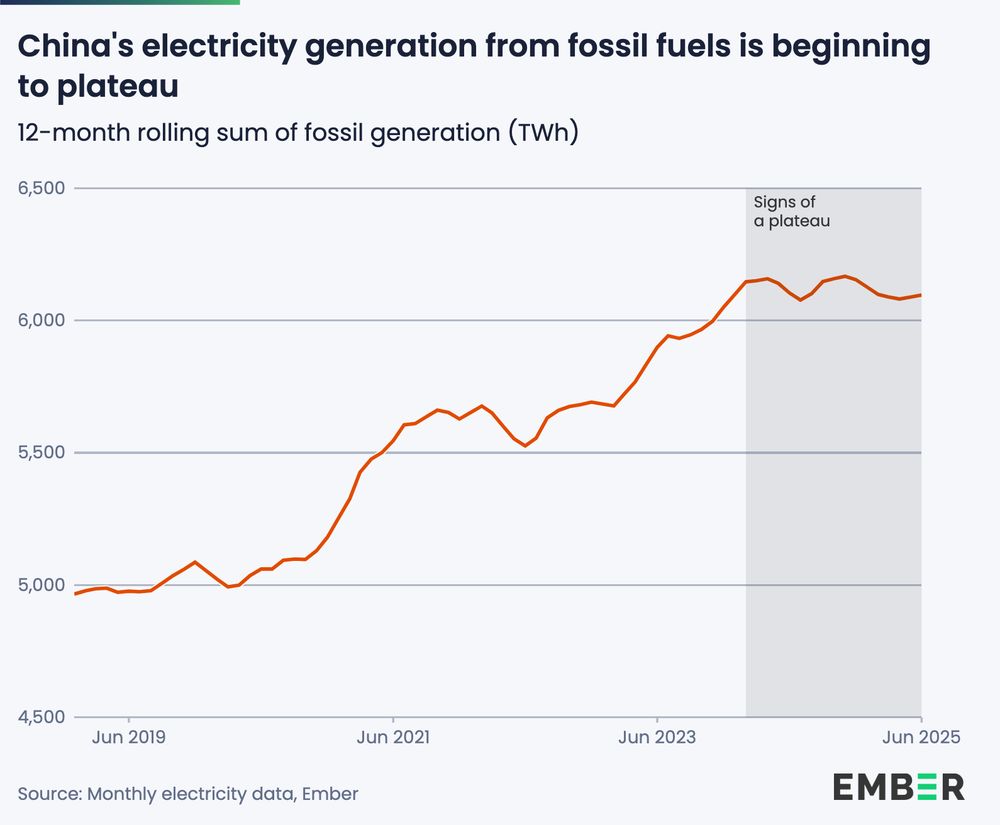
Finding, curating and explaining the data behind the global energy⚡️transition.
bsky.app/profile/nico...
Ember forecasts no increase in fossil generation as wind and solar are growing fast enough to meet all new electricity demand.

bsky.app/profile/nico...

The yoy increase of 498 TWh in Q1-Q3 was three times larger than the next biggest increase from wind.
Solar's rise is in stark contrast to stagnating fossil generation.

The yoy increase of 498 TWh in Q1-Q3 was three times larger than the next biggest increase from wind.
Solar's rise is in stark contrast to stagnating fossil generation.
Combined with an increase in nuclear generation and falls in hydro power, fossil generation saw a minor decline in Q1-Q3.

Combined with an increase in nuclear generation and falls in hydro power, fossil generation saw a minor decline in Q1-Q3.

The previous record for battery share of load was set in April.
The previous record for battery share of load was set in April.




The difference now? Record growth in wind and solar generation.

The difference now? Record growth in wind and solar generation.
2024 saw record heatwaves push up cooling demand, but 2025 has been much milder. This moderated demand growth, sometimes even dropping below 2024 levels, a rare sight in India's steadily growing power sector.

2024 saw record heatwaves push up cooling demand, but 2025 has been much milder. This moderated demand growth, sometimes even dropping below 2024 levels, a rare sight in India's steadily growing power sector.

Fossil power has plateaued since early 2024 as solar and wind have been matching or growing faster than electricity demand.

Fossil power has plateaued since early 2024 as solar and wind have been matching or growing faster than electricity demand.
In China, low-carbon power growth from solar, wind (and some nuclear) was higher than the increase in electricity demand, despite a small fall in hydro generation. This led to a decline in coal.

In China, low-carbon power growth from solar, wind (and some nuclear) was higher than the increase in electricity demand, despite a small fall in hydro generation. This led to a decline in coal.
Coal generation dipped slightly compared to the first half of 2024, with renewables continuing to grow.

Coal generation dipped slightly compared to the first half of 2024, with renewables continuing to grow.

